How to Identify and Incorporate a Whole Foods Diet
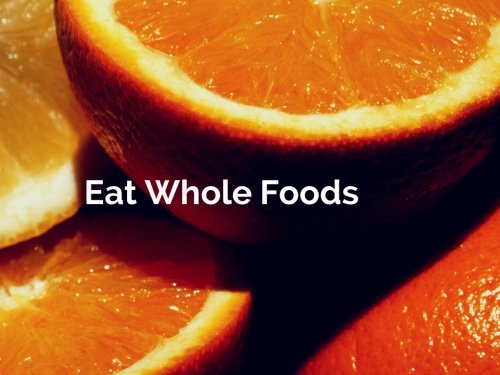
What Is A Whole Foods Diet?
The
definition of a whole foods diet is a little bit tricky. We're going
to get into some serious explanations on exactly what whole foods are
and why they're incredibly important.
In my weight loss video,
I go into detail about how things used to be in the '70s. We never,
ever ate out of a box. At least not for dinners or mealtimes. I do seem
to dimly remember eating pound cake out of a box, but this was a very
rare occurrence.
Our meals were sometimes made out of scraps in
the refrigerator, which were turned into masterful dinners feeding five
people. No one ever went without. And we were poor. Not dirt poor,
but poor enough. But we ate well, and we were healthy. In the 1970s, there was no
obesity in our community.
Fast forward to the current year. Take a walk down any supermarket aisle, and
take a mental snapshot. Ninety percent of the food is pre-packed and
presented as a healthy alternative.
In my neighborhood, the vast
majority of shoppers load their baskets with pre-fabricated fake food
items. These consumers are unaware of the massive risk they are taking
by ingesting artificial food.
Check out our video Obese Nation. The baskets that we're showing depict an exact replica of what we see in our neighborhood.
The Great Au Gratin Potato Fakeout
Think about this. A food manufacturer takes a real potato, dries it out, adds emulsifiers, color, chemicals and other unnamed counterfeit ingestibles. It's boxed and presented to you as a quick potato au gratin. I've had these freeze dried potatoes. They taste wonderful. But they taste nothing like home-made au gratin potatoes made from scratch in your oven. There's just no comparison.
Sure, the home made au gratin potatoes are a pain to make, but you know exactly what's going into that baking dish and into your family's bellies. Milk, potatoes, butter, cheese, salt and pepper.
And there's just something about making it yourself. There's a spirituality there that cannot be duplicated in a lab. You can see the intense satisfaction in your family's eyes knowing you made them a delicious, nourishing dinner.
When you eliminate the sugars and the chemicals, your body responds unexpectedly. Your weight is easily controlled, and you don't have recurrent hunger episodes that you get when you're eating synthetic foods.
Our bodies are very clever and know when they're not being fed. This
is why hunger is such a serious problem when you're eating imitation
foods.
Your enteric nervous system (gut) is a separate intelligence from your brain. Your gut clearly knows the difference between real foods and designer, chemically altered, imitation foods. If only people knew how easy it is to solve their weight problems.
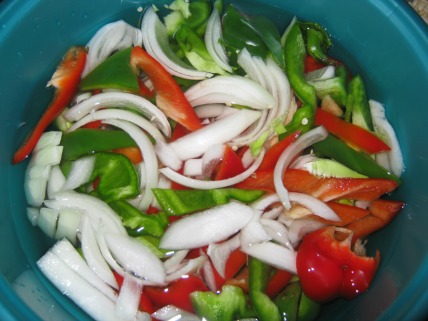
Eating a Whole Foods Diet Eliminates Dieting
Artificial pretend food is passed off as containing 9 essential vitamins and minerals. I guess that's to make us feel better about choices we instinctively know are harmful.
Look at a box of Pop Tarts. If we hold our hands behind our backs and cross our fingers, advertisers can almost convince us that Pop Tarts are part of a nutritious, whole foods diet. I beg to differ.
Fake food is so prevalent in our American culture, that when we eat 100 percent natural foods, it's seen as foreign or odd. Eating a whole foods diet is seen as being very different, a curiosity, something abnormal.
I've even had supermarket checkers question my motives for exclusively buying whole foods. They spend ten minutes staring at my purchases and questioning me about how I live. And get this: I've even gotten a few of them to change, hurriedly exchanging recipes during a purchase.
Explanation of a Whole Foods Diet
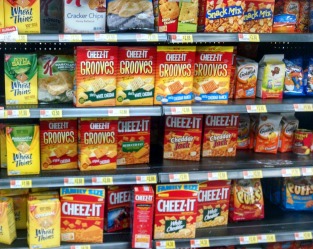
Let's begin by explaining exactly what a whole foods diet is. The best way to describe a whole food is this: A whole food is exactly the way nature made it, or extremely close. If you take a ripe, plump, juicy bright red tomato, this is a whole food. You pluck it off its plant, and it's in its whole, glorious, naturally made form. Now take that same tomato and turn it into V8 juice in a can. It's no longer a whole food. It's a processed imitation full of sodium, preservatives, and other harmful additives.
Click here for a full explanation of processed foods
Popular Fake Food Item No. 1 White Rice
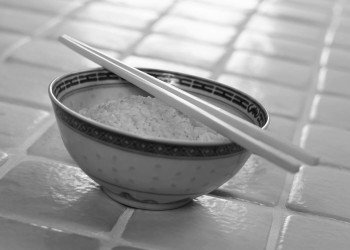
Many people are unfamiliar with different types of rice. There's black rice, red rice, brown rice, wild rice, and white rice. But for the purposes of explaining how rice is processed, we're going to go into how brown rice is processed into white rice.
If you look at the nutrient content of a bag of white rice, it is almost completely devoid of nutrients and fiber. But brown rice is full of vitamin b-6, biotin, fiber, and is rich in essential nutrients. You may ask why white rice is preferred. It's preferred because it's pretty and fluffy and it cooks faster. Faster by about eight minutes.
This is also true of Uncle Ben's and other boxed versions of supposedly brown rice. So the bran and endosperm and outer husk of the brown rice is removed and voila, you have a high glycemic nightmare.
White rice has a glycemic index of more than 100. For people on our hair loss diet, white rice is one of the first things to go. So, brown rice is a healthy part of a whole foods diet, and white rice needs to be removed.
Popular Fake Food Item No. 2: Fruit Juice
An apple is one of nature's most magnificent creations. My favorite is a dark juicy, Red Delicious apple. You can pluck that succulent apple right off the tree in its whole form. An apple off of the tree is a whole food. Take that same apple and juice it into Juicy Juice eight-pack and it turns into something completely different. It's no longer a whole food.
Even without added sugar, juice will expand your waistline faster than sodas containing high fructose corn syrup. Fruit juices are not part of a whole foods diet.
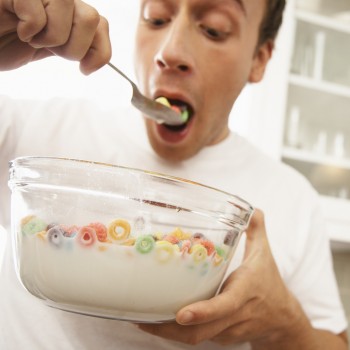
Fake Food Item No. 3: Cereal
Cereal is touted as healthy, nutritious and full of vitamins. When a truly whole grain is pulverized, its fundamentally healthy nature is changed. It's no longer a whole food. Truly whole grain foods contain the endosperm, the embryo and all of the fiber that nature implanted into the food.
Did you know that if we ate all of the fiber nature intended us to, we would be consuming 300 grams per day? The average American gets 12 grams of fiber per day. This is a national disaster. Fiber is critical for disease prevention, in particular colon cancer.
Let's take Cocoa Pebbles kids' cereal as an example. We know that processed rice is an extremely high glycemic index food. We also know that sugar is very high on the glycemic index.
The first two ingredients in Cocoa Pebbles is rice and sugar. The first ingredient has the most content per serving, and the second ingredient has the second highest. Boxed, chemically altered cereal is not part of a whole foods diet.
Cereal has been described by food journalists as cardboard sprayed with synthetic vitamins. Click here for more information on processed food and cereal..
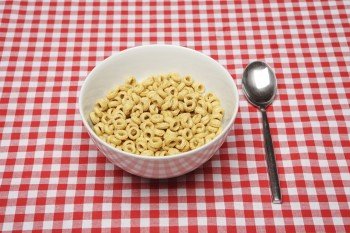
Whole Food Cereals Do Not Come In The Shape of An O
Cheerios promotes their cereal as whole grain. I was unaware that
whole grains came in the shape of an O. What they're doing is starting
with a whole grain, and then crushing it. Most of the fiber is removed
to increase shelf life. Once its natural chemical structure is changed,
it's no longer a whole food.
Once it's powdered and shaped into
an o, it's much higher on the glycemic index and is no longer part of a whole
foods diet. The standard cereals on supermarket shelves are not a
healthy part of our children's diets, and need to be strictly moderated or removed.
Natural grains like buckwheat, quinoa, or whole grain, old fashioned oats are excellent choices and make wonderful breakfast cereals. Steel cut oatmeal is also a great choice. It's a little more expensive, but it lasts a long time.
You can eat a mouthful of Cheerios in two or three seconds. You cannot do that with whole grain foods. Steel cut oats are a true whole grain food and take a long time to chew. Whole grains take a long time to digest. This controls blood glucose, and therefore prevents disease.
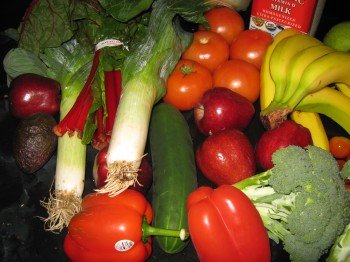
Natural Food Spoils Very Quickly
Whole
foods rot so quickly, there's a lot of waste. This can be very
discouraging when you're eating a whole foods diet. We've discovered
there's a reason for this. Natural food is teaming with living
enzymes. When natural, living food is
no longer useful, it signals its death and we remove it.
Even at
The Healthy Diet Paradise, we run into the issue of food that spoils
quickly. I throw away about 10 to 15 percent of the whole food produce
that I buy. It used to upset me, but now I understand that it's part of
nature.
As an example, we have an orange tree that produces
about 500 to 600 oranges per year. At least 20 percent of those oranges
either rot, fall off and go back into the ground, or they just plain
get wasted. It's part of the natural process.
Since natural
food spoils so quickly, you're going to need to make more trips to the
store. It's a constant hassle buying fresh foods. But like the old saying
goes: "You're either going to pay the grocer, or pay the doctor."
Click here to learn how to incorporate inexpensive foods into your diet.
Take
a look at your pantry, and think about your next meal choice. You can
make simple changes every day. These simple changes will lead to
long-lasting, permanent changes that will color your life beautiful.
Sheree Gilkey is a participant in the Amazon Services LLC Associates Program, an affiliate advertising program designed to provide a means for sites to earn advertising fees by advertising and linking to amazon.com

